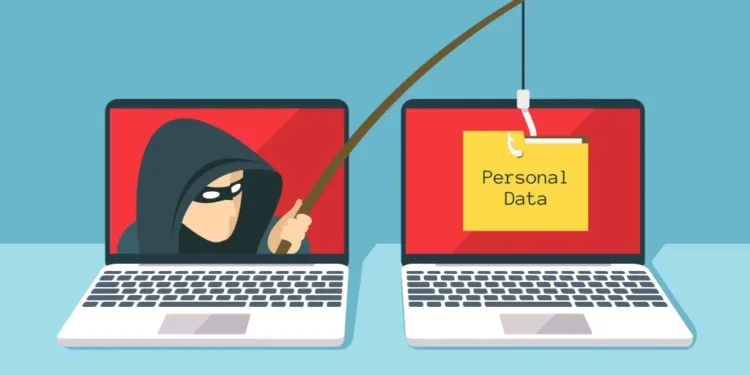Phishing attacks remain one of the most common and damaging cyber threats facing small businesses today. These deceptive tactics trick employees into revealing sensitive information like passwords, financial details, or access credentials. For small businesses, the consequences can be devastating—from financial loss to reputational damage.
This article provides practical phishing prevention tips for small businesses, helping you safeguard your company’s digital assets. Along with essential technical controls such as Secure Remote Access Solutions for Small Business, implementing strong anti-phishing strategies is key to maintaining security in today’s online environment.
What Is Phishing and Why Is It Dangerous for Small Businesses?
Phishing is a cyber attack where fraudsters impersonate trusted entities—such as banks, vendors, or colleagues—usually via email, text, or phone calls. The goal is to trick recipients into clicking malicious links, downloading infected attachments, or sharing confidential information.
Small businesses are especially vulnerable because they often lack the resources of larger corporations to invest heavily in cybersecurity defenses. Yet, attackers know that even a single compromised account can grant access to critical systems, customer data, and financial information.
Top Phishing Prevention Tips for Small Businesses
1. Educate Employees About Phishing Risks
Your staff are your first line of defense. Conduct regular training sessions to help them recognize phishing emails and suspicious behavior. Teach them to verify the sender’s email address, avoid clicking on unexpected links, and report suspicious messages promptly.
2. Implement Email Filtering and Anti-Phishing Software
Use advanced email filtering tools that scan incoming messages for malware, malicious links, and known phishing patterns. Many security suites offer AI-powered detection to block phishing attempts before they reach employees’ inboxes.
3. Use Multi-Factor Authentication (MFA)
MFA adds a critical layer of protection by requiring users to provide multiple forms of verification before accessing company accounts. Even if credentials are compromised in a phishing attack, MFA helps prevent unauthorized access.
4. Secure Your Network with Firewalls and Encryption
A well-configured firewall can block suspicious traffic, while encrypting sensitive data transmissions protects information from interception. Pair these with Secure Remote Access Solutions for Small Business to ensure employees connect securely, especially when working remotely.
5. Regularly Update and Patch Systems
Cybercriminals often exploit outdated software vulnerabilities to launch phishing campaigns or install malware. Keep your operating systems, browsers, and security software updated to close these loopholes.
6. Verify Requests for Sensitive Information
Establish clear protocols for handling requests involving passwords, payment information, or confidential data. Encourage employees to verify requests through a secondary communication channel (e.g., phone call) before taking action.
7. Back Up Important Data Frequently
Regular backups can help your business recover quickly if a phishing attack leads to data loss or ransomware infection. Store backups securely offline or in a cloud service with strong security controls.
Phishing Prevention Tools Comparison Table
| Tool/Technique | Description | Benefits | Considerations |
|---|---|---|---|
| Email Filtering | Blocks spam and malicious emails | Reduces phishing email volume | May require fine-tuning |
| Anti-Phishing Training | Employee education programs | Increases awareness and vigilance | Needs regular updates |
| Multi-Factor Authentication | Adds second verification step | Prevents unauthorized access | Somewhat increases login complexity |
| Secure Remote Access Solutions | Encrypted and monitored remote access | Protects remote connections | Requires setup and monitoring |
| Firewalls and Encryption | Network protection and data security | Blocks attacks and secures data | Needs technical expertise |
| Regular Software Updates | Patch vulnerabilities | Closes security gaps | Requires ongoing management |
| Data Backup | Copies of critical business data | Enables quick recovery | Backup integrity must be verified |
How Phishing Can Impact Small Businesses
Phishing attacks can lead to:
- Financial Loss: Fraudulent wire transfers or theft of credit card info
- Data Breach: Exposure of customer or employee personal information
- Operational Downtime: System lockdowns caused by ransomware infections
- Reputational Damage: Loss of customer trust and business opportunities
- Legal Consequences: Penalties for failing to protect sensitive data under regulations
FAQs: Phishing Prevention Tips for Small Businesses
Q1: How can I tell if an email is a phishing attempt?
Look for signs like poor grammar, urgent requests, unfamiliar sender addresses, suspicious links, or unexpected attachments.
Q2: Is it enough to rely on antivirus software to prevent phishing?
No. While antivirus helps detect malware, phishing attacks often rely on social engineering. A multi-layered defense including training and MFA is essential.
Q3: How often should I train employees on phishing awareness?
At least twice a year, with refresher courses and simulated phishing tests to reinforce learning.
Q4: Can phishing happen through phone calls or text messages?
Yes. These are known as vishing (voice phishing) and smishing (SMS phishing) and require similar caution and verification.
Q5: What should employees do if they suspect a phishing email?
Report it immediately to the IT or security team without clicking any links or downloading attachments.
Final Thoughts
Phishing attacks pose a significant threat to small businesses but can be effectively prevented by combining employee awareness, robust technology, and clear policies. By following these phishing prevention tips for small businesses and adopting secure infrastructure like Secure Remote Access Solutions for Small Business, you can protect your organization from costly breaches and maintain a strong security posture.
Remember, cybersecurity is a continuous process that requires vigilance and adaptation to evolving threats. Start by strengthening your human firewall and layering in technological defenses to build resilience against phishing attacks.




